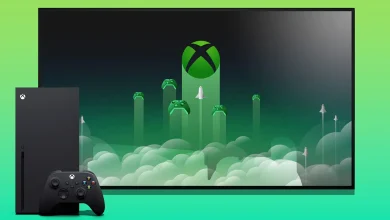The Dawn of Online Gaming: Pioneering a Digital Frontier

Introduction:
The dawn of online gaming represents a transformative period in the history of interactive entertainment, marking the emergence of virtual worlds where players could connect, compete, and collaborate in real-time. This article delves into the origins, evolution, and cultural impact of online gaming during its nascent years, exploring the technological innovations, challenges, and milestones that shaped the digital frontier of gaming.
Origins and Early Experiments:
The seeds of online gaming were planted in the 1960s and 1970s, when computer scientists and researchers began experimenting with networked computer systems and early forms of multiplayer gameplay. One notable example is the development of “Spacewar!” at the Massachusetts Institute of Technology (MIT) in 1962, which allowed players to pilot spaceships and engage in dogfights in a shared virtual space. While rudimentary by today’s standards, “Spacewar!” laid the foundation for the multiplayer experiences that would follow.
Text-Based Adventures and MUDs:
The 1970s and 1980s saw the rise of text-based adventures and Multi-User Dungeons (MUDs), which enabled players to explore virtual worlds, interact with other players, and engage in collaborative storytelling. Games like “Adventure” and “Zork” captivated players with their rich narratives and immersive environments, while MUDs like “MUD1” and “AberMUD” introduced multiplayer gameplay elements, allowing players to embark on quests, form alliances, and engage in player-versus-player combat in shared virtual realms.
Bulletin Board Systems (BBS) and Early Online Communities:
The advent of bulletin board systems (BBS) in the 1980s provided a platform for early online gaming communities to flourish. BBSs allow users to connect to remote servers via dial-up modems and exchange messages, files, and games with other users. Online multiplayer games like “Legend of the Red Dragon” and “TradeWars 2002” became popular attractions on BBSs, fostering vibrant communities of players who shared tips, strategies, and stories in online forums and chat rooms.
Commercial Online Services:
The commercialization of online gaming began in the late 1980s and early 1990s with the launch of commercial online services like CompuServe, Prodigy, and America Online (AOL). These services offered access to multiplayer games, chat rooms, and forums, providing players with a centralized hub for online entertainment and social interaction. Games like “Neverwinter Nights” and “Island of Kesmai” introduced graphical elements to online gaming, paving the way for the graphical MMORPGs (Massively Multiplayer Online Role-Playing Games) that would dominate the online gaming landscape in the years to come.
The Emergence of Graphical MMORPGs:
The mid-1990s saw the rise of graphical MMORPGs like “Meridian 59,” “Ultima Online,” and “The Realm Online,” which combined immersive 3D graphics with persistent virtual worlds and player-driven gameplay. These games allowed thousands of players to inhabit shared online universes, where they could create characters, embark on quests, and interact with other players in real-time. MMORPGs became cultural phenomena, attracting millions of players and spawning vibrant online communities that transcended geographical and cultural boundaries.
Technical Challenges and Innovations:
The early days of online gaming were not without challenges, as developers grappled with issues such as latency, bandwidth limitations, and server stability. Dial-up internet connections and limited computing power posed significant obstacles to delivering smooth and responsive online gaming experiences. However, technological advancements in networking hardware, software, and infrastructure helped to address these challenges over time, paving the way for the widespread adoption of broadband internet connections, dedicated servers, and client-server architectures that would become the backbone of online gaming.
Cultural Impact and Legacy:
The dawn of online gaming had a profound cultural impact, shaping the way people interacted with technology, entertainment, and each other. Online gaming fostered communities, friendships, and rivalries among players from around the world, transcending geographical and cultural boundaries. It introduced concepts such as guilds, clans, and esports, laying the groundwork for the vibrant online gaming culture that exists today. Moreover, online gaming paved the way for future innovations in multiplayer gaming, from competitive esports tournaments to social gaming experiences, ensuring its lasting legacy in the history of gaming.
Conclusion:
The dawn of online gaming represents a pioneering era of experimentation, innovation, and community building as developers and players alike explored the possibilities of connected gaming experiences. Despite the technical challenges and limitations of the time, online gaming laid the foundation for the vibrant and interconnected gaming landscape that exists today, shaping the way we play, connect, and compete in virtual worlds. As technology continues to evolve and connectivity becomes even more ubiquitous, the legacy of the dawn of online gaming will continue to inspire future generations of players and developers alike.
Navigating the Technological Landscape: Challenges and Innovations in Gaming and Entertainment
Introduction:
In the dynamic world of gaming and entertainment, technological advancements drive innovation and shape the experiences of players and audiences. However, along with progress come challenges that developers must overcome to deliver seamless, immersive, and engaging experiences. This article explores the technical challenges faced by the gaming and entertainment industries and the innovative solutions that have propelled them forward.
Hardware Limitations:
One of the primary challenges faced by developers is working within the constraints of hardware limitations. Whether designing games for consoles, PCs, or mobile devices, developers must optimize their software to run smoothly on a variety of hardware configurations. This includes balancing graphical fidelity, performance, and resource utilization to ensure a consistent experience for players across different platforms. Additionally, hardware limitations can impact the scope and complexity of games, requiring developers to make trade-offs in terms of features, content, and gameplay mechanics.
Scalability and Performance:
As gaming experiences become more immersive and complex, scalability and performance become critical considerations for developers. Games with large open worlds, detailed environments, and dynamic simulations require efficient rendering, physics, and artificial intelligence algorithms to maintain smooth gameplay and responsiveness. Furthermore, online multiplayer games must support thousands or even millions of concurrent players, requiring robust networking infrastructure and server architecture to handle the demands of real-time communication, synchronization, and matchmaking.
Latency and Input Lag:
Latency, or the delay between a player’s input and the corresponding action on screen, can significantly impact the gameplay experience, particularly in fast-paced and competitive games. Input lag, caused by factors such as display refresh rates, input devices, and network latency, can affect player responsiveness and accuracy, leading to frustration and disengagement. To mitigate latency and input lag, developers employ techniques such as predictive input buffering, client-side prediction, and server-side interpolation to ensure smooth and responsive gameplay.
Optimization and Performance Tuning:
Optimizing game performance is an ongoing process that involves fine-tuning various aspects of the game’s code, assets, and systems to achieve optimal performance on target platforms. This includes optimizing rendering pipelines, reducing memory overhead, and minimizing loading times to enhance overall responsiveness and user experience. Additionally, performance tuning involves identifying and resolving bottlenecks, inefficiencies, and resource-intensive tasks that may impact gameplay or stability.
Content Creation and Production Pipeline:
The creation of high-quality game content, including 3D models, textures, animations, and audio assets, presents its own set of technical challenges. Content creation pipelines must support the iterative and collaborative nature of game development, enabling artists, designers, and programmers to work together efficiently and effectively. Tools and technologies such as digital content creation software, version control systems, and asset management solutions help streamline the content creation process and ensure consistency, quality, and scalability across diverse teams and projects.
Emerging Technologies and Trends:
Despite the challenges, technological advancements continue to drive innovation and push the boundaries of gaming and entertainment. Emerging technologies such as virtual reality (VR), augmented reality (AR), and machine learning present new opportunities for developers to create immersive, interactive, and personalized experiences. Additionally, trends such as cloud gaming, procedural content generation, and real-time ray tracing are reshaping the way games are developed, distributed, and experienced, opening up new possibilities for creativity, accessibility, and scalability.
Conclusion:
In the ever-evolving landscape of gaming and entertainment, technical challenges are inevitable, but they also spur innovation and creativity. By overcoming these challenges through ingenuity, collaboration, and perseverance, developers continue to push the boundaries of what is possible, delivering unforgettable experiences to players and audiences around the world. As technology continues to advance, the future of gaming and entertainment is filled with exciting possibilities, promising even more immersive, interactive, and transformative experiences for years to come.
Unveiling Tomorrow’s Frontiers: Emerging Technologies and Trends in Gaming and Entertainment
Introduction:
As the gaming and entertainment industries continue to evolve, they are propelled forward by a wave of emerging technologies and trends that promise to redefine the way we play, consume content, and interact with digital media. This article explores the forefront of innovation, delving into the most exciting emerging technologies and trends shaping the future of gaming and entertainment.
Virtual Reality (VR):
Virtual reality (VR) has long been hailed as the next frontier in gaming and entertainment, offering immersive experiences that transport players into virtual worlds like never before. With advancements in VR hardware such as headsets, motion controllers, and haptic feedback devices, players can interact with digital environments in unprecedented ways, whether exploring fantastical landscapes, engaging in intense combat, or solving intricate puzzles. VR technology is also finding applications beyond gaming, from virtual tours and educational experiences to therapeutic interventions and virtual social gatherings, opening up new possibilities for immersive storytelling and human interaction.
Augmented Reality (AR):
Augmented reality (AR) overlays digital content onto the real world, blending virtual elements with physical environments to create interactive and engaging experiences. AR technology, popularized by mobile apps like Pokémon Go and Snapchat filters, has the potential to revolutionize gaming and entertainment by transforming everyday spaces into dynamic playgrounds for exploration and discovery. From location-based games and interactive museum exhibits to marketing campaigns and immersive storytelling experiences, AR offers endless opportunities to blur the lines between the digital and physical worlds, engaging audiences in new and exciting ways.
Cloud Gaming:
Cloud gaming, also known as game streaming, enables players to access and play games remotely over the internet without the need for dedicated gaming hardware. By offloading the processing and rendering tasks to powerful cloud servers, cloud gaming platforms offer players the flexibility to play high-quality games on a variety of devices, including smartphones, tablets, smart TVs, and low-end PCs. With services like Google Stadia, NVIDIA GeForce Now, and Xbox Cloud Gaming (formerly known as Project xCloud), players can enjoy instant access to a vast library of games, seamless cross-platform play, and real-time multiplayer experiences, all without the hassle of downloads, installations, or hardware upgrades.
Procedural Content Generation:
Procedural content generation (PCG) is a technique used to generate game content, such as levels, environments, and quests, algorithmically rather than manually. By leveraging algorithms, randomization, and rule-based systems, developers can create infinitely varied and dynamic game worlds that adapt to player actions and preferences. Procedural generation is increasingly being used in a variety of game genres, from open-world exploration games like “Minecraft” and “No Man’s Sky” to roguelike dungeon crawlers like “Spelunky” and “The Binding of Isaac,” offering endless replayability and emergent gameplay experiences.
Real-Time Ray Tracing:
Real-time ray tracing is a rendering technique that simulates the behavior of light rays in virtual environments, resulting in more realistic lighting, shadows, and reflections. Traditionally used in film and visual effects production, ray tracing has recently made its way into gaming thanks to advancements in graphics hardware and software. With technologies like NVIDIA’s RTX platform and Microsoft’s DirectX Raytracing (DXR), game developers can create visually stunning and cinematic experiences that rival the quality of offline rendering, bringing unprecedented levels of realism and immersion to gaming environments.
Conclusion:
As we stand on the cusp of a new era in gaming and entertainment, emerging technologies and trends hold the promise of unlocking unprecedented levels of immersion, interactivity, and creativity. Whether through virtual reality, augmented reality, cloud gaming, procedural content generation, or real-time ray tracing, the future of gaming and entertainment is brimming with exciting possibilities. By embracing these emerging technologies and trends, developers and content creators can continue to push the boundaries of what is possible, delivering unforgettable experiences that captivate and inspire audiences around the world.
Introduction to Online Gaming
Online gaming has revolutionized the world of entertainment, creating a thrilling frontier for players to explore. With the advent of the internet, gaming has moved beyond the boundaries of physical consoles and arcades, allowing individuals to connect and compete with players from around the globe. The evolution of online gaming has been nothing short of remarkable, transforming the way we play and experience games.
The Growth and Popularity of Online Gaming
Over the years, online gaming has experienced exponential growth in popularity. What was once a niche hobby has now become a mainstream form of entertainment. The accessibility and convenience of online gaming have played a significant role in its widespread adoption. With just a click of a button, players can immerse themselves in virtual worlds, battling enemies, solving puzzles, or collaborating with teammates. One of the key factors driving the popularity of online gaming is the social aspect it offers. Through multiplayer options, players can connect with friends, family, and even strangers, forming communities and forging new friendships. The sense of camaraderie and competition that online gaming provides is unparalleled, creating a sense of belonging and excitement for players.
The Technology Behind Online Gaming
Behind the scenes, online gaming relies on a complex network of technologies to deliver seamless gameplay experiences. From the game servers that host and manage player interactions to the internet infrastructure that allows for real-time communication, a myriad of technological components work in harmony to ensure a smooth gaming experience.One of the most crucial technologies in online gaming is cloud computing. By harnessing the power of cloud servers, game developers can offload processing tasks, reducing the strain on players’ devices and enabling them to enjoy high-quality graphics and immersive gameplay. Additionally, advancements in internet speeds and bandwidth have paved the way for more sophisticated online gaming experiences, with minimal lag and latency.
The Evolution of Online Gaming Platforms
The evolution of online gaming platforms has been a key driver in the growth of the industry. From the early days of text-based multiplayer games to the immersive virtual reality experiences of today, online gaming platforms have continuously pushed the boundaries of what is possible. In the early 2000s, online gaming platforms such as Xbox Live and PlayStation Network introduced the concept of online multiplayer gaming on home consoles. This breakthrough allowed players to connect with others worldwide and paved the way for the rise of competitive online gaming. As technology advanced, PC gaming platforms like Steam and Epic Games Store emerged, providing players with a vast library of games and convenient digital distribution. More recently, mobile gaming has taken the online gaming industry by storm. With the proliferation of smartphones and tablets, players can now enjoy their favorite games on the go. Mobile gaming platforms, such as the Apple App Store and Google Play Store, have become hubs for both casual and hardcore gamers, offering a wide range of titles to suit every taste.
The Different Types of Online Games
Online gaming encompasses a diverse range of genres and gameplay styles, catering to a wide variety of player preferences. From massive multiplayer online role-playing games (MMORPGs) to first-person shooters and puzzle games, there is something for everyone in the world of online gaming. MMORPGs like World of Warcraft and Final Fantasy XIV have captivated millions of players worldwide, offering vast virtual worlds to explore and epic quests to undertake. These games often feature intricate storylines, immersive environments, and cooperative gameplay, fostering a sense of adventure and community. On the other hand, first-person shooters like Call of Duty and Overwatch have revolutionized competitive gaming. Players can test their skills against others in fast-paced, adrenaline-fueled battles. Strategy games, such as League of Legends and Dota 2, require careful planning and teamwork, making them popular choices for players who enjoy tactical gameplay.
The Social Aspect of Online Gaming
One of the most significant advantages of online gaming is its social aspect. Gaming has evolved from a solitary activity to a platform for social interaction, allowing players to connect, communicate, and collaborate with others. Online gaming communities have sprung up around the world, bringing together individuals who share a common passion for games. Through in-game chat systems, voice chat applications, and forums, players can engage in conversation, form friendships, and even build long-lasting relationships. Online gaming has become a social space where players can express themselves, share experiences, and support one another.
The Impact of Online Gaming on the Entertainment Industry
The rise of online gaming has had a profound impact on the entertainment industry as a whole. It has not only reshaped the way we consume games but has also influenced other forms of media, such as movies and television shows.Online gaming has become a source of inspiration for filmmakers and writers, with numerous adaptations of popular games hitting the big screen. From the action-packed “Assassin’s Creed” to the fantasy epic “Warcraft,” these adaptations aim to capture the excitement and immersive world-building of their gaming counterparts.Additionally, online gaming has given rise to a new breed of content creators and influencers. Platforms like Twitch and YouTube have provided gamers with a platform to showcase their skills, entertain audiences, and build careers. Gaming tournaments and esports events have also gained mainstream recognition, attracting millions of viewers and offering lucrative prizes.
Online Gaming Trends and Future Projections
As technology continues to advance, online gaming is poised for even greater innovation and growth. Several trends are shaping the future of the industry, offering exciting possibilities for players and developers alike.One such trend is the rise of cloud gaming. With services like Google Stadia and Microsoft xCloud, players can stream games directly to their devices, eliminating the need for powerful hardware. This opens up gaming to a wider audience and allows for seamless cross-platform play.Virtual reality (VR) and augmented reality (AR) are also set to transform the online gaming landscape. VR headsets like the Oculus Rift and HTC Vive offer immersive, interactive experiences, while AR games like Pokémon Go blend the real and virtual worlds. These technologies have the potential to revolutionize gameplay and create entirely new genres of games.
Challenges and Controversies in the Online Gaming Industry
Despite its many successes, the online gaming industry has not been without its challenges and controversies. Issues such as toxic behavior, online harassment, and addiction have plagued the industry, prompting calls for stricter regulations and safer gaming environments.Developers and platform providers are increasingly taking steps to address these concerns. In-game moderation tools, reporting systems, and community guidelines are being implemented to combat toxic behavior and create a more inclusive gaming community. Furthermore, initiatives like responsible gaming campaigns and parental controls aim to promote healthy gaming habits and protect vulnerable players.
Conclusion:
The Exciting Future of Online Gaming
The evolution of online gaming has been a remarkable journey, transforming the way we play, connect, and experience games. From the early days of dial-up internet to the seamless multiplayer experiences of today, online gaming has come a long way.As technology continues to advance and new innovations emerge, the future of online gaming looks brighter than ever. With cloud gaming, VR, and AR on the horizon, players can expect even more immersive and exciting experiences. Online gaming has become a global phenomenon, bridging cultures and connecting individuals through a shared love for digital entertainment.So, whether you’re a casual gamer or a die-hard enthusiast, the world of online gaming awaits. Embark on your own adventures, forge new friendships, and explore the thrilling frontier of digital entertainment.
CTA:
Start your online gaming journey today and experience the excitement for yourself! Join a vibrant community of players and discover the endless possibilities of online gaming. Dive into a world of virtual adventures and connect with gamers from around the globe. Begin your epic gaming adventure today!











